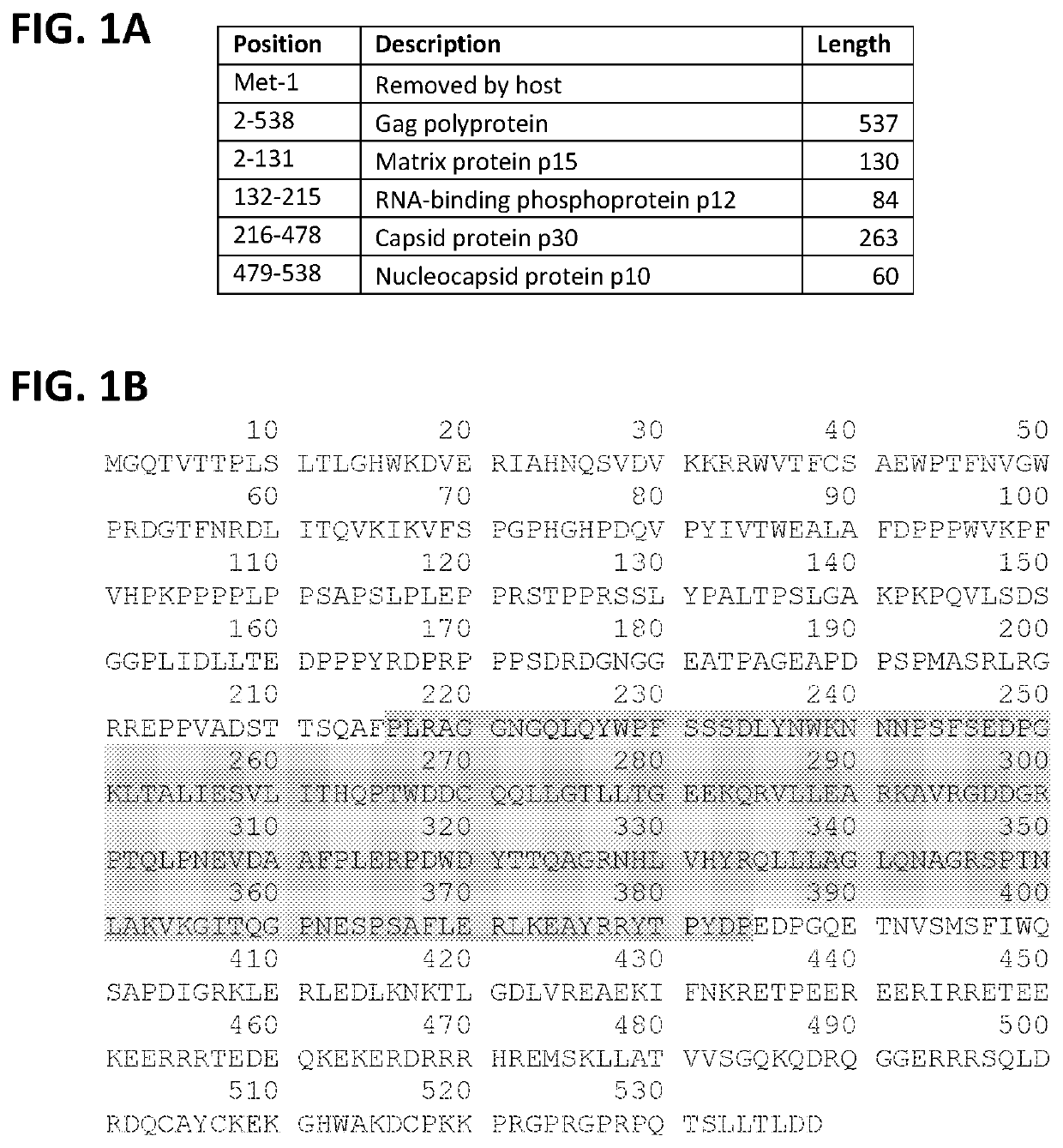Immortalization of Splenic and Peripheral Blood Macrophages Using a Multi-Cistronic V-RAF/V-MYC Lentivirus
a lentivirus and multi-cistronic technology, applied in the field of immortalization of splenic and peripheral blood macrophages using a multicistronic vraf/vmyc lentivirus, can solve the problems of limited availability of primary monocytes/macrophages, difficult study, and j2 has not been widely adopted as a reagent for generating macrophage cell lines. , the effect of increasing the viral yield
- Summary
- Abstract
- Description
- Claims
- Application Information
AI Technical Summary
Benefits of technology
Problems solved by technology
Method used
Image
Examples
example 1
Construction of LIVeMac Plasmids
[0072]Lentiviral vectors constructed for the purpose of producing immortalized macrophages are referred to as LIVeMac (Lentivirus Immortalizing Vertebrate Macrophages) plasmids, and have bicistronic or multicistronic inserts.
[0073]The v-raf and v-myc oncogenes were isolated by PCR from the J2 plasmid (Rapp (1985) Virology 55:23-33; Blasi (1985) Nature 318:667-70). The v-raf gene of J2 is part of a MMLV-Gag / v-raf fusion. The Gag portion of this polyprotein is likely to be cleaved in J2-infected cells, as illustrated in FIG. 1A. To reduce the length of DNA inserted into the lentiviral vector, which should increase transformation efficiency and viral yields, DNA encoding the Matrix protein (p15) and RNA-binding phosphoprotein (p12) was excluded from the PCR product and replaced with an initiator methionine. The resulting Gag / v-raf fusion contained only the shaded region of Gag shown in FIG. 1B. The Gag-p30 / v-raf fusion site at position 384 of the Gag pol...
example 2
Production of Viral Supernatants
[0078]LIVeMac vectors were used to produce virus by employing a 2nd-generation lentiviral packaging system. LIVeMac plasmid DNA was co-transfected into HEK-293T cells with a plasmid encoding the vesicular stomatitis virus glycoprotein (VSV-G) and the packaging plasmid, pCMV-R8.74, which encodes lentivirus structural proteins. The resulting supernatants contain infectious, replication-incompetent VSV-G-pseudotyped lentiviral particles.
[0079]The transfection protocol used, as follows, is a modified version of that described by Jordan (1996) Nucl. Acids. Res. 24:596-601.
[0080]Day 1
[0081]Afternoon before transfection, split cells (HEK-293T or the Phoenix packaging line) so that they will be 50-80% confluent in 24 hours. Split cells into a 6 well plate in 1 ml of complete media (DME works well, RPMI does not work well), and grow cells in 37° C., 5% CO2 incubator. Plating 6×105 per well gives the appropriate density. Note: it is also worthwhile to pretreat ...
example 3
Immortalization of Peripheral Blood Mononuclear Cells with LIVeMac
[0101]The overall procedure used for preparing immortalized macrophages from PBMCs is illustrated in FIG. 8. Prepare peripheral blood mononuclear cells according to standard protocols by, for example, lysing red blood cells and the collecting cells by density gradient centrifugation.
[0102]Culture collected cells in a petri plate or non-tissue treated 24 well plate in DMEM with 10% Cosmic Calf Serum, L-Glutamine, and Penicillin / streptomycin. The media should also contain GM-CSF from a feeder cell line at a concentration of 1×.
[0103]Cells should be left in this condition for 4 days. At this point myeloid cells should be proliferating and appear as colonies of round clustered cells. This is the optimal time to transduce the cells.
[0104]Coat plates that cells will be transduced in with Retronectin (a fibronectin fragment that binds retrovirus, enhancing infectivity) at 50 μg / mL per the company protocol.
[0105]Add viral sup...
PUM
| Property | Measurement | Unit |
|---|---|---|
| volume | aaaaa | aaaaa |
| concentration | aaaaa | aaaaa |
| specific affinity | aaaaa | aaaaa |
Abstract
Description
Claims
Application Information
 Login to View More
Login to View More - R&D
- Intellectual Property
- Life Sciences
- Materials
- Tech Scout
- Unparalleled Data Quality
- Higher Quality Content
- 60% Fewer Hallucinations
Browse by: Latest US Patents, China's latest patents, Technical Efficacy Thesaurus, Application Domain, Technology Topic, Popular Technical Reports.
© 2025 PatSnap. All rights reserved.Legal|Privacy policy|Modern Slavery Act Transparency Statement|Sitemap|About US| Contact US: help@patsnap.com



